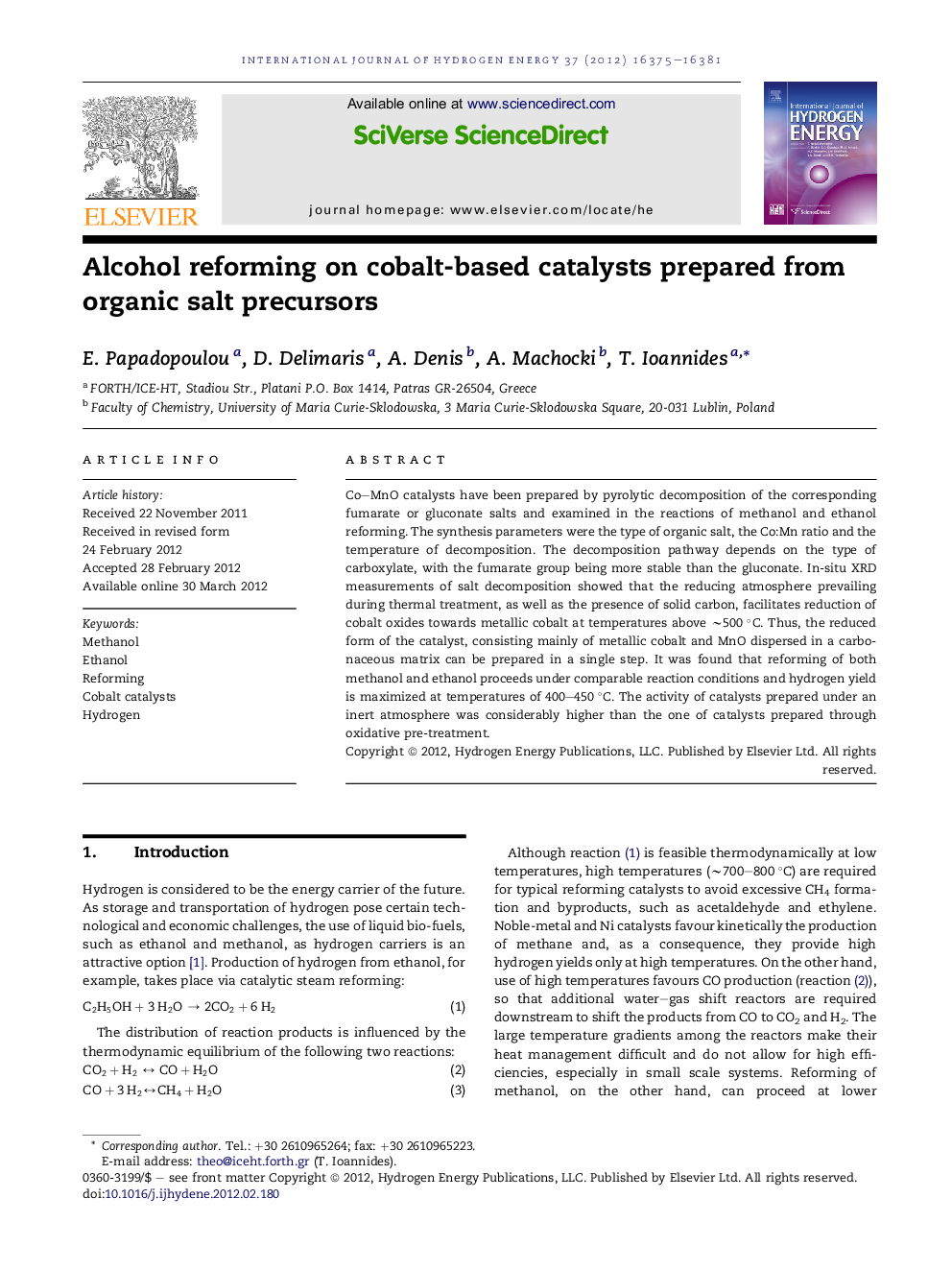| Article ID | Journal | Published Year | Pages | File Type |
|---|---|---|---|---|
| 1282165 | International Journal of Hydrogen Energy | 2012 | 7 Pages |
Co–MnO catalysts have been prepared by pyrolytic decomposition of the corresponding fumarate or gluconate salts and examined in the reactions of methanol and ethanol reforming. The synthesis parameters were the type of organic salt, the Co:Mn ratio and the temperature of decomposition. The decomposition pathway depends on the type of carboxylate, with the fumarate group being more stable than the gluconate. In-situ XRD measurements of salt decomposition showed that the reducing atmosphere prevailing during thermal treatment, as well as the presence of solid carbon, facilitates reduction of cobalt oxides towards metallic cobalt at temperatures above ∼500 °C. Thus, the reduced form of the catalyst, consisting mainly of metallic cobalt and MnO dispersed in a carbonaceous matrix can be prepared in a single step. It was found that reforming of both methanol and ethanol proceeds under comparable reaction conditions and hydrogen yield is maximized at temperatures of 400–450 °C. The activity of catalysts prepared under an inert atmosphere was considerably higher than the one of catalysts prepared through oxidative pre-treatment.
► Pyrolysis of organic Co–Mn salts leads to formation of metallic Co nanoparticles. ► Pyrolyzed materials are more active than the ones prepared via calcination. ► Reforming of both alcohols takes place under comparable operating conditions. ► MeOH reforming takes place through decomposition and water–gas shift reaction steps.
